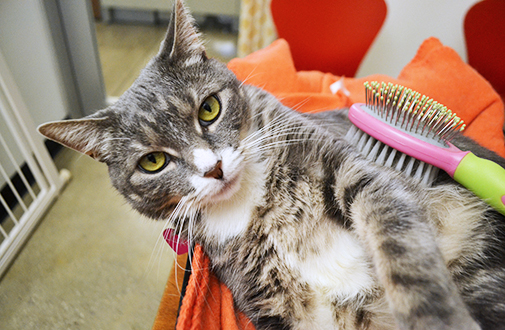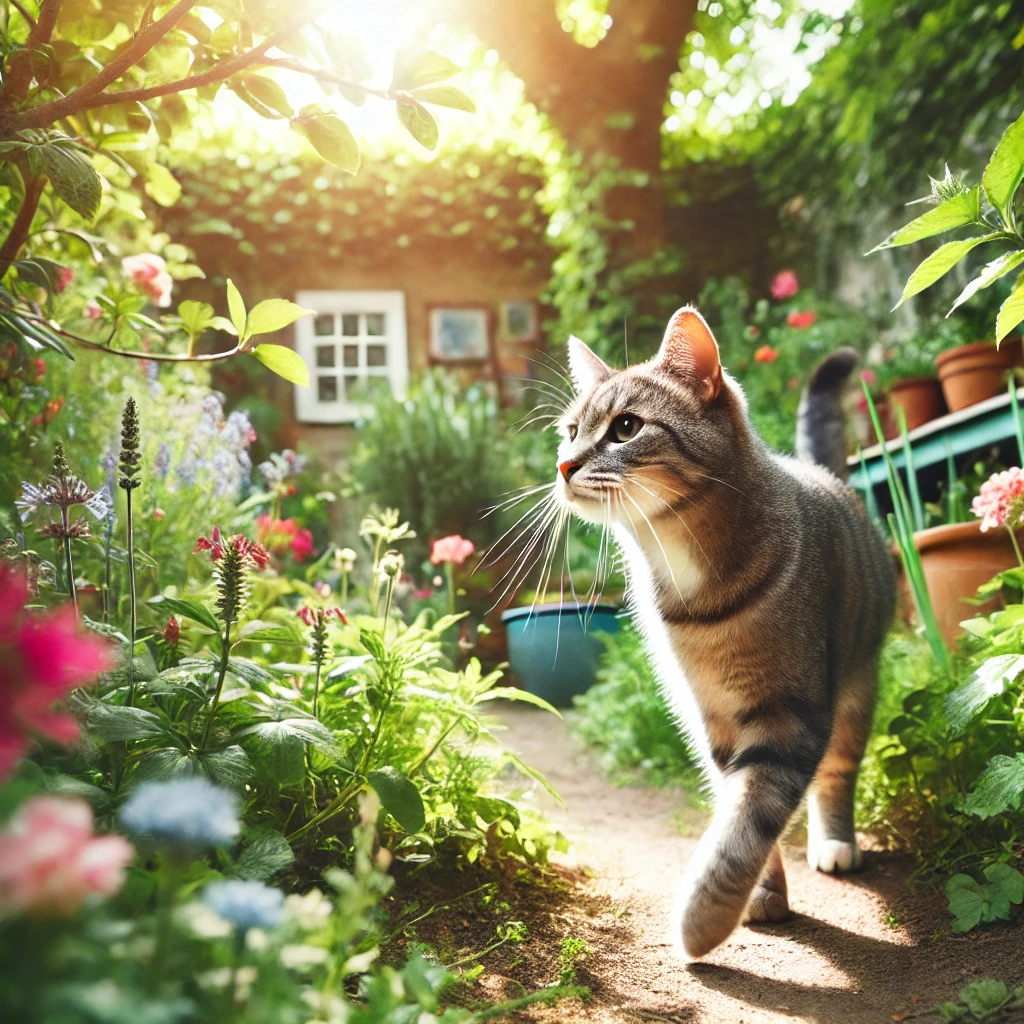Taking care of a cat involves providing regular, suitable meals with fresh water and a clean, comfortable bed, as well as outdoor access or a daily cleaned litter tray, and a stimulating, safe environment. Cats also need proper grooming, oral hygiene, and a daily routine that includes play, feeding, and litter box cleaning to stay healthy and happy.
Cats are beloved pets known for their independence and affectionate nature. However, they require proper care to thrive. This includes meeting their basic needs such as feeding, grooming, and maintaining their general health. We’ll cover the essential tips for taking care of a cat, including feeding, grooming, and overall health to ensure your feline friend’s well-being.
Whether you’re a new cat owner or looking to enhance your pet care skills, understanding the basics of cat care is crucial for providing a healthy and happy life for your cat.

Credit: icatcare.org
Feline Nutrition: Crafting A Balanced Diet
Crafting a balanced diet is crucial for feline nutrition. Learn essential tips for taking care of your cat, including proper feeding, grooming, and general health maintenance.
Choosing The Right Cat Food
Cats require a diet that is rich in protein, with a balance of fats and carbohydrates. Look for cat foods that have animal-based proteins as their primary ingredients, such as chicken, turkey, or fish. Avoid foods with excessive fillers or artificial additives.
Wet Vs. Dry Food Debate
Both wet and dry foods have their benefits. Wet food can help with hydration and is often more palatable, while dry food can aid in dental health and is more convenient. Combining both types can offer the advantages of each.
Understanding Nutritional Needs
Understanding a cat’s nutritional needs is essential. Cats require specific nutrients such as taurine, which is vital for heart and eye health. Always check the labels and consult with a veterinarian to ensure your cat’s diet meets their nutritional requirements.
Hydration Is Key
Hydration is key to maintaining your cat’s overall health and well-being. Just like humans, cats need to stay hydrated to ensure their bodies function properly. As a responsible pet owner, it’s essential to understand the importance of providing fresh water and encouraging your cat to drink regularly.
Importance Of Fresh Water
Fresh water is crucial for your cat’s health. It aids in digestion, helps regulate body temperature, and supports kidney function. Dehydration can lead to serious health issues, so it’s important to ensure your cat has access to clean, fresh water at all times.
Tips To Encourage Drinking
- Place water bowls in multiple locations around your home to make it convenient for your cat to drink.
- Keep the water bowls clean and change the water regularly to maintain freshness.
- Consider using a pet fountain to entice your cat with flowing water, which can be more appealing than standing water.
- Add wet food to your cat’s diet as it contains moisture, contributing to their overall hydration.
- Monitor your cat’s water intake to ensure they are drinking an adequate amount each day.
Grooming For Health And Comfort
Proper grooming is essential to keep your cat healthy and comfortable. Basic cat care tips include regular brushing to prevent matting, oral hygiene to maintain dental health, and daily litter box cleaning to prevent parasites from breeding. Providing a stimulating and safe environment is also important for your feline friend’s overall well-being.
Brushing Basics
Regular brushing is essential for keeping your cat’s coat healthy and free from tangles and mats. It helps to remove loose fur, distribute natural oils, and stimulate blood circulation. When brushing your cat, use a soft-bristled brush or comb that is suitable for their coat type.
Nail Trimming Techniques
Trimming your cat’s nails is important to prevent them from becoming too long and causing discomfort or potential injury. To trim your cat’s nails, use a pair of cat nail clippers or human nail clippers with a straight edge. Be careful not to cut into the quick, which is the sensitive area inside the nail.
Bathing Best Practices
Bathing a cat is not always necessary, as they are usually able to groom themselves effectively. However, there may be occasions when your cat gets dirty or has a specific skin condition that requires bathing. When bathing your cat, use a cat-friendly shampoo and lukewarm water. Make sure to thoroughly rinse off all the shampoo to avoid any skin irritations.
Grooming your cat regularly not only helps maintain their appearance but also promotes their overall health and comfort. By following these grooming tips, you can ensure that your feline friend stays clean, comfortable, and free from any grooming-related issues.

Credit: icatcare.org
Litter Box Etiquette
One of the most important aspects of cat care is ensuring proper litter box etiquette. Cats are naturally clean animals, and providing them with a clean and comfortable place to do their business is essential for their well-being. In this section, we will cover everything you need to know about selecting the right litter box, maintaining cleanliness, and solving common litter issues.
Selecting The Right Litter Box
Choosing the right litter box for your cat is crucial to ensure their comfort and ease of use. Here are some factors to consider when selecting a litter box:
- Size: The litter box should be large enough for your cat to comfortably turn around and dig in.
- Accessibility: If you have an older or disabled cat, opt for a litter box with low sides for easy entry and exit.
- Material: Consider the material of the litter box. Some cats prefer covered boxes for added privacy, while others prefer open boxes for better ventilation.
Maintaining Cleanliness
Keeping the litter box clean is essential to prevent odor and maintain your cat’s hygiene. Here are some tips to help you maintain cleanliness:
- Scoop Daily: Scoop the litter box at least once a day to remove waste and clumps.
- Replace Litter Regularly: Completely replace the litter and clean the box on a weekly basis to keep it fresh.
- Use Unscented Litter: Cats have sensitive noses, so it’s best to use unscented litter to avoid overwhelming them with artificial fragrances.
Solving Common Litter Issues
Sometimes, cats may develop litter box issues that require troubleshooting. Here are some common problems and their solutions:
| Issue | Solution |
|---|---|
| Accidents outside the litter box | Ensure the litter box is clean and accessible. Consider adding an additional litter box in different areas of the house. |
| Refusing to use the litter box | Check for any medical issues and consult with a veterinarian. Experiment with different types of litter to find one your cat prefers. |
| Scraping litter out of the box | Try using a litter mat outside the box to catch excess litter and prevent it from being scattered around. |
Remember, providing your cat with a clean and suitable litter box is essential for their physical and mental well-being. By following these tips and addressing any litter box issues promptly, you can ensure a harmonious relationship with your feline friend.
Exercise And Play: Keeping Cats Agile
To keep your cat agile and healthy, regular exercise and play are essential. Engage your cat in interactive toys and provide climbing structures to promote physical activity and mental stimulation. Incorporating playtime into their daily routine helps maintain their agility and overall well-being.
Interactive Toys And Games
Keeping your feline friend agile and active is not only essential for their physical health, but also for their mental well-being. Interactive toys and games are a great way to keep your cat engaged and stimulated. Toys that encourage hunting and chasing behavior, such as feather wands, laser pointers, and balls, are excellent options. Puzzle toys that dispense treats or hide toys are also great for mental stimulation.Creating A Stimulating Environment
In addition to interactive toys, creating a stimulating environment for your cat is important. Providing a variety of scratching posts, perches, and hiding spots can keep them entertained and engaged. Consider placing bird feeders outside windows for your cat to watch. You can also rotate toys and furniture to keep things fresh and exciting. Playing with your cat for at least 15 minutes a day is recommended for maintaining their physical and mental health. Remember to always supervise playtime to ensure your cat’s safety. By incorporating interactive toys and games and creating a stimulating environment, you can keep your cat happy, healthy, and agile.Preventive Healthcare
Preventive healthcare for cats involves providing regular meals, a clean and cozy resting place, and a stimulating environment. Regular grooming and dental care are essential for their general health. Maintaining a daily routine that includes playtime, feeding, and litter box cleaning is crucial for a cat’s overall well-being.
Preventive Healthcare Preventive healthcare is crucial for ensuring your cat’s long-term health and happiness. It involves regular checkups, vaccinations, and parasite control, as well as spaying or neutering. By taking a proactive approach to your cat’s healthcare, you can catch any potential health problems early and prevent them from becoming serious issues. Routine Vet Checkups Regular checkups with a veterinarian are essential for maintaining your cat’s health. During these visits, your vet will perform a physical exam, check for any signs of illness, and recommend preventive measures to keep your cat healthy. They may also suggest blood work, dental cleanings, or other diagnostic tests to catch any potential health issues early. Vaccinations and Parasite Control Vaccinations and parasite control are also important components of preventive healthcare. Vaccinations protect your cat from a variety of dangerous diseases, while parasite control helps prevent infestations of fleas, ticks, and other pests. Your vet can recommend a vaccination and parasite control schedule that is appropriate for your cat’s age, health, and lifestyle. Spaying/Neutering Benefits Spaying or neutering your cat is another important aspect of preventive healthcare. It can help prevent unwanted litters, reduce the risk of certain diseases, and improve your cat’s behavior. Spayed and neutered cats are also less likely to roam and get into fights, which can help prevent injuries and illnesses. In conclusion, preventive healthcare is an essential part of taking care of your cat. Regular checkups, vaccinations, parasite control, and spaying or neutering can help keep your cat healthy and happy for years to come. By taking a proactive approach to your cat’s healthcare, you can catch any potential health problems early and prevent them from becoming serious issues.Behavior And Socialization
Understanding feline behavior and socializing your cat with others are crucial aspects of cat care. Cats have their own unique body language, and being able to interpret it can help you better understand and meet their needs.
Understanding Feline Body Language
Cats communicate through their body language, and being able to decipher their signals can help you determine their mood and intentions. Here are some common feline body language cues:
- Tail Position: A relaxed, upright tail usually indicates a content cat, while a puffed-up tail may signal fear or aggression.
- Ear Position: Forward-facing ears suggest curiosity or attentiveness, while flattened ears may indicate aggression or fear.
- Pupil Size: Dilated pupils can indicate excitement or fear, while constricted pupils may indicate aggression or stress.
- Posture: A relaxed and open posture usually indicates a calm cat, while a hunched or tense posture may signal discomfort or aggression.
Socializing Your Cat With Others
Socialization is important for cats to help them feel comfortable and confident in various social situations. Here are some tips for socializing your cat:
- Start Early: Introduce your cat to new people, animals, and environments when they are still young to help them adapt and feel less anxious.
- Positive Reinforcement: Use treats, toys, and praise to reward your cat for calm and friendly behavior when meeting new people or animals.
- Gradual Introductions: Allow your cat to approach new people or animals at their own pace, and provide a safe space where they can retreat if they feel overwhelmed.
- Provide Enrichment: Engage your cat in interactive play, provide scratching posts, and create vertical spaces to encourage mental stimulation and confidence.
- Consult a Professional: If you’re having difficulty socializing your cat, consider seeking guidance from a professional animal behaviorist or trainer.
By understanding feline body language and implementing proper socialization techniques, you can ensure that your cat feels safe, comfortable, and well-adjusted in various social situations.
Managing Feline Stress
Cats, like humans, can experience stress. Changes in their environment, routine, or social interactions can all contribute to feline stress. As responsible cat owners, it’s important for us to understand how to identify signs of stress in our cats and provide them with the necessary tools to cope. In this section, we will explore the different ways to manage feline stress, including identifying signs of stress, creating a safe space, and implementing stress reduction techniques.
Identifying Signs Of Stress
It’s essential to be able to recognize when our cats are feeling stressed. While cats can’t communicate their emotions verbally, they do exhibit certain behaviors that can indicate stress. Keep an eye out for the following signs:
- Excessive grooming or licking
- Loss of appetite or overeating
- Changes in litter box habits
- Aggression towards humans or other animals
- Excessive hiding or withdrawal
- Increased vocalization
If you notice any of these signs, it’s crucial to address the underlying cause of stress and provide your cat with the necessary support.
Creating A Safe Space
One effective way to help your cat cope with stress is to create a safe space where they can retreat to when they feel overwhelmed. This can be a specific room or area in your home that is quiet and calm. Here are some tips for creating a safe space:
- Choose a secluded area away from high-traffic areas
- Provide a comfortable bed or blanket for your cat to relax on
- Include familiar objects, such as their favorite toys or scratching post
- Ensure the space is free from any potential stressors, such as loud noises or other pets
By providing your cat with a safe space, you give them a sense of security and control, which can help alleviate stress.
Stress Reduction Techniques
There are various stress reduction techniques you can implement to help your cat relax and feel more at ease. Here are some effective strategies:
- Regular play sessions: Engage your cat in interactive play sessions to help release pent-up energy and reduce stress.
- Environmental enrichment: Provide your cat with toys, scratching posts, and climbing structures to keep them mentally stimulated and engaged.
- Calming pheromones: Consider using pheromone diffusers or sprays specifically designed for cats to create a calming atmosphere in your home.
- Maintain a consistent routine: Cats thrive on routine, so try to establish a consistent schedule for feeding, playtime, and other daily activities.
By incorporating these stress reduction techniques into your cat’s daily routine, you can help them lead a happier and more relaxed life.
Caring For A Senior Cat
Caring for a senior cat requires basic cat care tips such as feeding, grooming, and general health. It is important to provide suitable meals with fresh water, a clean and comfortable bed, outdoor access or a litter tray, and a stimulating environment.
Regular grooming and dental care are also essential to maintain a senior cat’s health.
Adjusting Care For Aging Cats
As cats age, they require adjustments in their care to ensure their comfort and well-being. Senior cats may have reduced mobility and energy levels, so it’s essential to provide them with a cozy and easily accessible bed. Additionally, consider installing ramps or steps to help them reach elevated areas. Adjust their diet to accommodate changing nutritional needs, and ensure regular veterinary check-ups to monitor their health.
Monitoring For Age-related Health Issues
- Regular veterinary check-ups are crucial for early detection of age-related health issues such as arthritis, dental problems, and kidney disease.
- Observe your senior cat for changes in appetite, weight, and behavior, as these could indicate underlying health concerns.
- Provide regular grooming to help maintain their coat and skin health, and keep an eye out for lumps, bumps, or any changes in their physical condition.
Emergency Preparedness
Cats are curious creatures and can sometimes find themselves in sticky situations. Being prepared for emergencies is crucial for ensuring the safety and well-being of your feline friend. From first aid essentials to recognizing emergencies and planning for evacuations, here’s what you need to know to keep your cat safe in unexpected situations.
First Aid Essentials
It’s essential to have a well-stocked first aid kit for your cat. Here are some items to include:
- Antiseptic wipes
- Gauze pads
- Adhesive tape
- Hydrogen peroxide
- Rectal thermometer
- Scissors
- Tweezers
Recognizing Emergencies
It’s important to be able to recognize signs of an emergency in your cat. Look out for:
- Difficulty breathing
- Excessive bleeding
- Loss of consciousness
- Seizures
- Fractures
- Unresponsiveness
Planning For Evacuations
In the event of a natural disaster or other emergency, it’s crucial to have a plan in place for your cat. Here are some tips for planning for evacuations:
- Have a carrier or crate ready for transport
- Keep a supply of your cat’s food and medications in a waterproof container
- Have a current photo of your cat for identification purposes
- Know the location of pet-friendly shelters in your area
- Keep a list of emergency contacts, including your veterinarian

Credit: www.aspca.org
Frequently Asked Questions
What Are The Basic Care Needs Of A Cat?
To care for a cat, provide regular meals with fresh water, a clean and comfortable bed, outdoor access or a clean litter tray, and a stimulating environment.
What Are The Necessities For Cats?
Ensure regular, suitable meals and fresh water, a clean, comfortable bed, outdoor access or a daily cleaned litter tray, a stimulating and safe environment.
What Is Proper Hygiene For Cats?
Proper cat hygiene includes regular brushing, oral care, and daily cleaning of the litter box. Additionally, provide a stimulating environment and regular vet check-ups.
How Do I Take Care Of My Cat’s Daily Routine?
To take care of your cat’s daily routine, follow these steps: 1. Provide regular meals and fresh water. 2. Give your cat a clean and comfortable bed. 3. Allow outdoor access or clean the litter tray daily. 4. Create a stimulating and safe environment.
5. Engage in play sessions and provide regular grooming.
Conclusion
Taking care of a cat requires a lot of effort, but it is worth it. Feeding your cat a balanced diet, grooming them regularly, and keeping them healthy are the basic necessities to ensure your cat’s well-being. By providing them with a stimulating environment and lots of love and affection, you can enjoy a long and happy life with your feline friend.
Remember to consult with a veterinarian for any additional care needs and to keep up-to-date with their health. Happy cat parenting!



